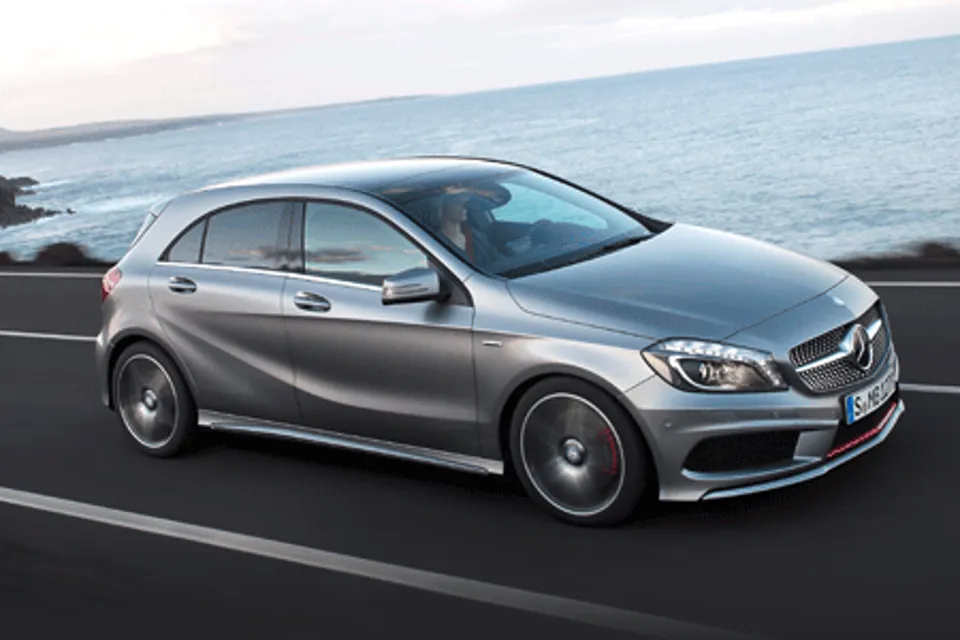From the beginning, the Mercedes-Benz A-Class was a vehicle that would see the brand operate in new ways.
As if to wipe the public’s memory of its staid predecessor, the company was determined that not only would the new car itself make an impression, but people’s perception of the brand would shift.
On its own admission the A-Class was regarded as “stuffy and conservative”.
There was also the matter of seeking a new, younger customer base.
A Mercedes-Benz spokeswoman said: “For decades, the brand has been perceived as a status car for mature drivers – the prize at the twilight of your career, rather than the accompaniment to a successful one.”
The perceived average age of Mercedes-Benz drivers had also consistently been around a decade older than for its competitors.
“We knew that the key to perception change was getting prospective drivers behind the wheel to experience the car,” she said.
So, the ad campaign for the new car seeked to exploit all the attributes of social media.
The objective was to increase interaction with ‘the young’, namely prospects between 25 and 44 years old, through digital content, click through rates, tweets, retweets, likes, shares and comments.
Activity ahead of the car’s launch this year was to be driven through search volume, website visits brochure and test drive requests and retail leads.
For the first time an ad was to have no mention of Mercedes-Benz, just an image of the car, the phrase ‘pure and simple’ and the Twitter hash tag #NewGeneration. It was shown during an England football match.
Also, an app was deployed that allowed smart phone and tablet users to access online marketing content from ads on screen and in print.
Mercedes-Benz also ran an ad on the music download site Spotify.com. Users were encouraged to choose the song they would use for the new A-Class advert and tweet their choice.
And with a campaign that used the popularity of The X Factor talent show (see story below), Mercedes-Benz was on a path to attract a much younger demographic.
The success of the pioneering approach was extraordinary: a month from the campaign’s launch 7,981 leads for Mercedes-Benz dealers had been generated for the A-Class, 82% of which were new prospects and 41% aged between 25 and 45.
Mercedes-Benz website visits were up 17%, A-Class brochure requests increased by 142%.
Records around interest levels were well and truly broken.
It wasn’t all about style; the new car has content to offer.
It has been described as an ‘iPhone on wheels’ by Mercedes-Benz marketing chief Gerd Sailer due to its multi-media technology, with iPhone integration for the first time in the model range. Continuing the youth oriented theme, he said: “Being able to access networked information anywhere at any time has become a vital part of everyday life.
"We are offering the Facebook generation a natural home on four wheels.”
"The design of the car is also meant to reflect the same approach: not boxy, but sculptured and inspired
by Concorde.
Efficient engines mean the A-Class is the first Mercedes-Benz to produce emissions of just 98g/km of CO2, appealing to company car drivers wanting to minimise benefit-in-kind liability.
Safety equipment levels also push boundaries: included as standard is the radar-based collision prevention assist, designed to reduce the risk of rear-end collisions or minimise their damage.
It incorporates visual and noise alerts and primes the brake assist to ensure maximum stopping power as soon as the driver touches the brakes and functions from 20mph.
Harnessing the power of social media
An extraordinary digital marketing campaign was created to target the new customer Mercedes-Benz was aspiring to attract.
To launch the A-Class, an interactive TV ad aired in the first X Factor commercial break in October 2012 and at its conclusion the audience was invited to ‘drive’ the next part of the story, involving a couple’s attempts to thwart the authorities’ move to cancel a secret gig.
Viewers were able to guide the action using Twitter and the hash tag (#newaclass) for the outcome they preferred. In the next break the ad continued based on the choice of the majority of the audience.
The process was repeated again that night and in the Sunday results show.
A custom YouTube channel (youtube.com/youdrive) was synchronised with the TV broadcast displaying the Twitter results in real-time.
You can re-enact the challenge at the YouTube channel.
Comment: The shifting sands of customer perception
At a recent family gathering of in-laws and various older relatives (some Mercedes-Benz owners), in their 50s and older, I asked their opinions on our AM's current A-Class long-termer .
It was unanimously panned.
Comments on the day included:
- “I didn’t recognise it as a Mercedes because of the design.”
- “I didn’t think Mercedes-Benz would do a model in that colour, maybe BMW, but not Mercedes.”
- “The styling is too flashy for Mercedes.”
- “It looks like a BMW.”
But rather than see that as a negative, the Mercedes marketing team can take heart that it is appealing to the right people.
















Login to comment
Comments
No comments have been made yet.